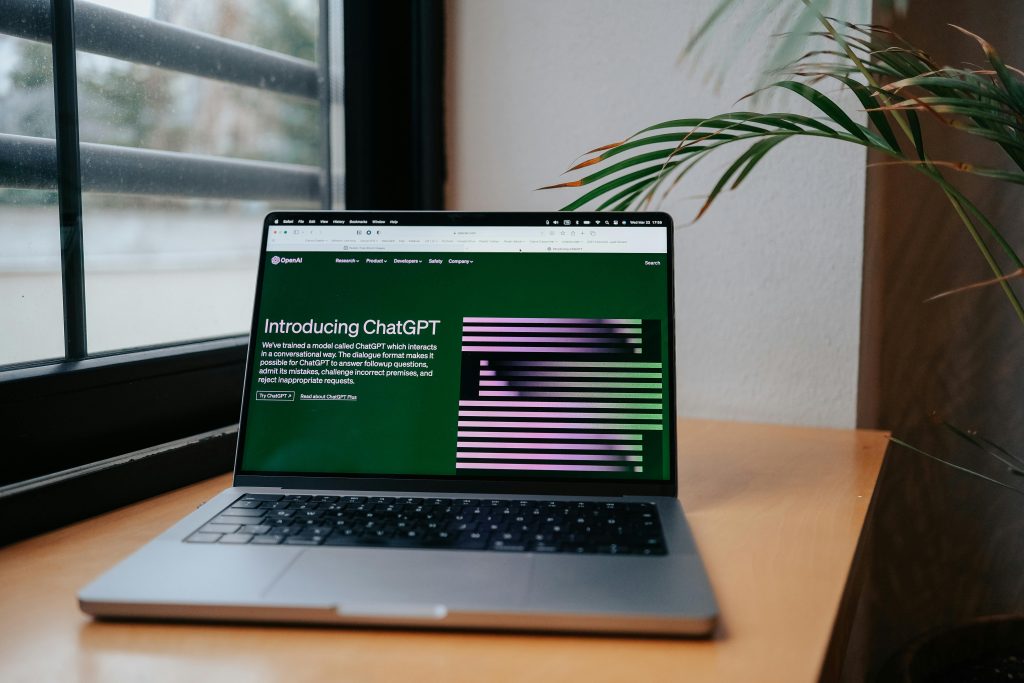Recently, OpenAI captured the attention of the world once again, with their latest update to ChatGPT. If you’ve suddenly started seeing Studio Ghibli versions of people online, then this is probably due to OpenAI’s ‘most advanced image generator yet’. The real concern is what this means for businesses and marketers, as it proposes to completely overhaul an entire sector of digital design.

ChatGPT Image Generation: What’s New?
4o image generation is now the standard default image generator in ChatGPT, and whilst free use is currently limited, it is available for anyone on the platform to access. Keen users will notice that image generation has been a part of ChatGPT for some time now, but this update presents a host of new capabilities, which ultimately makes AI-generated images more realistic. Here are a few of the key points that you need to be aware of:
- Text is rendered more accurately: Say goodbye to missing letters or incoherent spelling on AI images – ChatGPT can now render text in plain English. To achieve this, OpenAI trained their models to understand how images relate to language.
- Prompts are followed more precisely: Images are aligned more closely to prompts, meaning opportunities for more detailed and complex prompts for images. ChatGPT’s knowledge and chat context can be used to build on and improve images, so that users can better refine images to their intended vision. Prompts can include information like aspect ratio, hex codes, and even request background removal, for greater flexibility.
- Images can be Uploaded: Images are able to be uploaded or transformed or used as ‘visual inspiration’ for the creation of new images. There are endless possibilities for the use of this feature, especially when it comes to product marketing. A simple image of a product can be transformed into a high-quality ad campaign, achieved by simply using the right prompts.
Whilst image generation is not a new thing for AI, this update shows a clear transformation in attention to detail and customisation capabilities – which is why it has sparked such a debate across the internet. The example below, uploaded by Andrei Rotaru, demonstrates what a precise prompt can do in terms of visual marketing, without the need for designers, tools, or lengthy editing processes.

Image Credit: Andrei Rotaru on LinkedIn
What Does This Mean for Marketing?
When it comes to marketing, there are a host of opportunities provided by this new update. Brands can easily create an ad campaign with just the use of an AI prompt, cutting down on time and costs typically associated with this. This especially appeals to small business owners, who are now equipped with the tools similar to large corporations with dedicated design teams. Not only this, but brands can quickly experiment with different design ideas, and create reactive content to current trends, without the wait times associated with traditional design.
However, these tools still need human direction. AI tools are certainly powerful, but relying on them alone is not a strategy – a strong brand narrative still needs human insight, strategic alignment, and audience understanding. As brands begin to experiment with using AI image generation, it’s up to marketing professionals to ensure that visuals are unique, and that their campaigns do not get lost in the sea of AI-generated content. As this technology becomes more accessible, it can also become more generic, creating an opportunity for brands to stand out by not using AI for everything. Showing where the human touch still matters will help businesses maintain authenticity and a connection to their audiences.
As evidenced by the abundance of AI-generated Studio Ghibli-inspired images across social media, this update has raised concerns around copyright and licensing, especially for unique art styles. Graphic designers and digital artists who have spent years refining their craft can have their work replicated by AI in a matter of minutes, bringing up questions about the future of digital design.

Image Credit: Andrei Rotaru on LinkedIn
The New Update Is Still Limited, in Some Areas
Whilst some aspects of this new update promise to be revolutionary, there are still some limitations to what AI can do, in terms of image generators. For instance, if you stick with a prompt that has low context (in other words, not enough information or direction), ChatGPT may make up information, which can be misleading for audiences. When creating things like posters, the image generator can occasionally crop images so that some design elements are left out of the frame, as pictured below.

It still struggles with handling more than 20 distinct concepts; when tasked with producing an illustrated periodic table, words and images became incorrect, in the example provided by OpenAI. Moreover, whilst the customisation and context options are a huge selling point for this update, ChatGPT runs into challenges when asked to edit specific parts of the image, so things like typos are not always fixable. These limitations demonstrate a key underlying point for AI usage – that human sense checking is still required, especially if you’re using AI images for branding purposes.
The latest ChatGPT update marks the potential for a major shift in how marketers approach content creation, with remarkable speed, flexibility, and accessibility, especially for teams with limited design resources. Yet, as with any tool, its value depends on how it’s used. For marketers, the challenge is navigating the perfect balance between using AI for efficiency, without using originality and authenticity.
As a digital marketing consultancy, we are constantly looking for ways that brands can experiment creatively and stay responsive to trends. The most successful campaigns will still be grounded in human insight, strategic alignment, and brand authenticity. We help clients to find that balance, combining cutting-edge AI tools with data-driven marketing strategies to ensure their message stands out.
